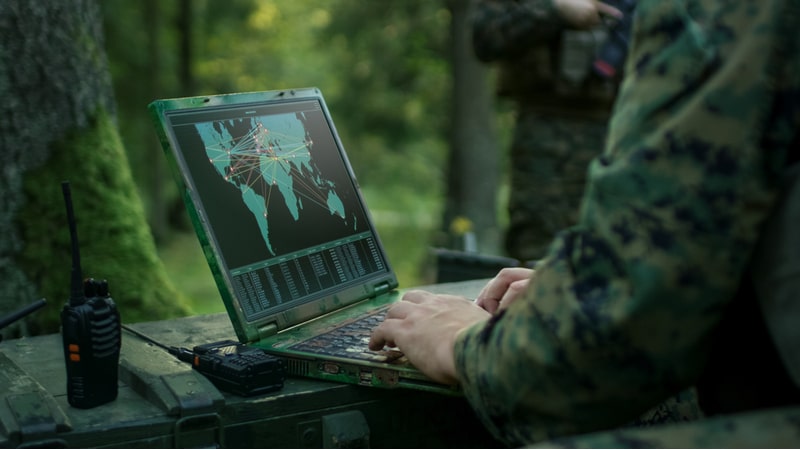
Two top officials from the Pentagon’s Chief Digital and Artificial Intelligence Office (CDAO) offered updates today to three of CDAO’s key programs that aim to scale AI across the Defense Department (DoD), including AI scaffolding initiatives through Alpha 1, the Global Information Dominance Experiment (GIDE) series, and how Task Force Lima is helping DoD adopt generative AI.
DoD established Task Force Lima, which is aimed at assessing and integrating generative AI capabilities across the Pentagon, in August 2023.
The task force’s three lines of effort are learn, accelerate, and guide, said U.S. Navy Capt. Xavier Lugo, Task Force Lima mission commander and CDAO’s algorithmic warfare division chief for AI scaffolding/integration.
“The learning line of effort was about collecting use cases,” Lugo said during a CSIS panel on March 26. “We’ve got now close to 230 official use cases collected, and what we did was categorize those use cases into what capabilities are people really looking for … That is ongoing.”
“What we were also learning was what are the actual capabilities out there from industry,” Lugo said. “This is the first time that I can confidently say that we are a week to two weeks only behind from what’s actually in the technology space out there. And it is because our industry is so forthcoming to us.”
On the second line of Task Force Lima’s effort – accelerate – Col. Matthew Strohmeyer, director of the GIDE series, explained during the CSIS panel that GIDE provides Task Force Lima a venue to experiment on new AI capabilities for services with a warfighting mission.
The CDAO relaunched the GIDE series in January 2023 with GIDE 5, expanding collaboration across combatant commands and international partners. The series, which the Pentagon has said will continue into 2024, is an experiment that happens every 90 days as “a new way for the department to be able to rapidly learn lessons and turn those lessons into field capabilities,” according to the program’s lead.
Strohmeyer said the most recent GIDE series allowed warfighters to leverage generative AI to make quicker decisions in the field.
“We just finished up GIDE 9 last week, and during it we did a single blind test with multiple combatant commands of an AI capability to be able to take logistics warfighting workflows that we have to go through, for example, analyzing what a good vehicle or means might need to be able to get some sustainment capability from one location to another location,” Strohmeyer said. “And the participants were required to be able to generate in a very short period of time … what is their recommended path that they would take.”
“The difference was this wasn’t research organizations, this was actual warfighters that were doing this and seeing what worked, what didn’t work as they went through the process,” the GIDE director said. “So that’s one example of how we’re really partnering with [Task Force Lima] to get very quick results.”
Strohmeyer said that generative AI capabilities like large language models (LLMs) are “very, very valuable” to the department because they can save “hundreds and hundreds of hours.”
The GIDE lead said now that the DoD is funded for fiscal year (FY) 2024, they will be able to “start pushing [LLMs] out more to combatant commands in ways that we wanted to.”
“We had to slow down our efforts because of that,” Strohmeyer said of the lapse of FY2024 funding for the DoD from October 2023 to March 2024. “We still delivered a minimum viable capability, but we did have to slow down considerably.”
Alpha 1 is a new CDAO program that was funded for the first time this year in the FY2024 appropriations bill, according to U.S. Navy Capt. Lugo.
“Alpha 1 is really a portfolio – it’s not a platform – it’s a portfolio of capabilities and services that will enable AI/ML scaffolding at scale on the enterprise,” Lugo said.
“We’re finding what those most demanded areas are – whether it is by the services, by program offices – by experimentation that shows these requirements and fielding those in a priority order as needed,” Lugo said.
The captain said that the first capability Alpha 1 has made available to services and specific program offices is data labeling.
“Data labeling was found to be a huge gap across the department, in the sense of program offices that were very mature already had their own data labeling services, but that came with constraints and caveats,” Lugo said. “For example, the data was not necessarily owned,” or didn’t have the ability to be shared.
“Three programs are transitioning right now, which are Smart Sensor, Maritime Object Detection and Harbinger,” Lugo said. “Those three are now part of the data labeling service.”
“We provide data labeling as a service to those three programs,” the captain continued, adding, “They don’t have to worry about it. So now the program office, really what it needs to be worried about, is building models and integrating those models into the weapon systems.”
